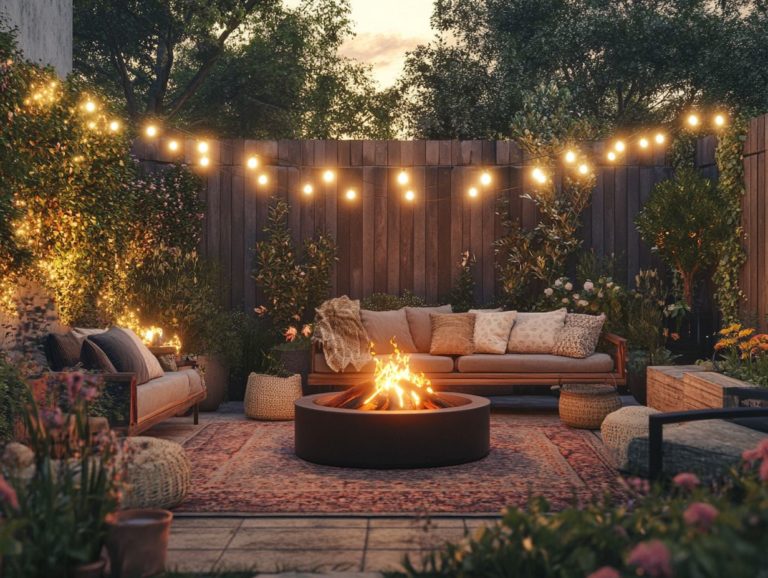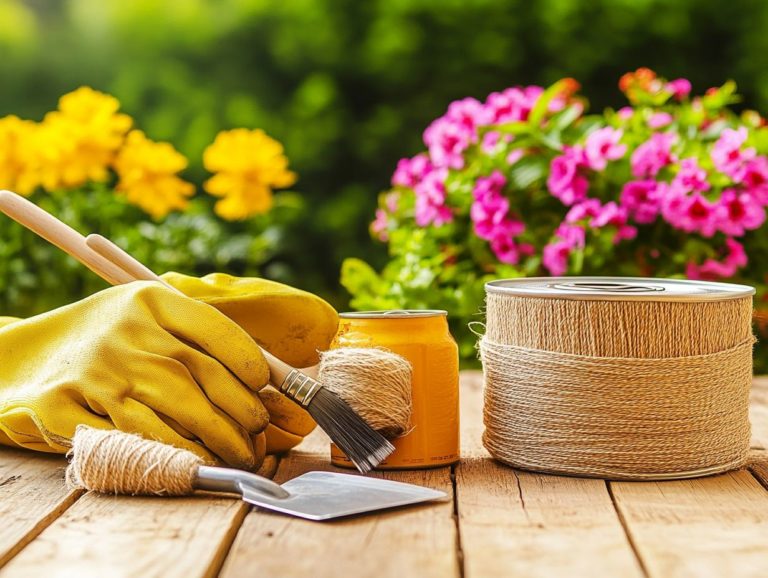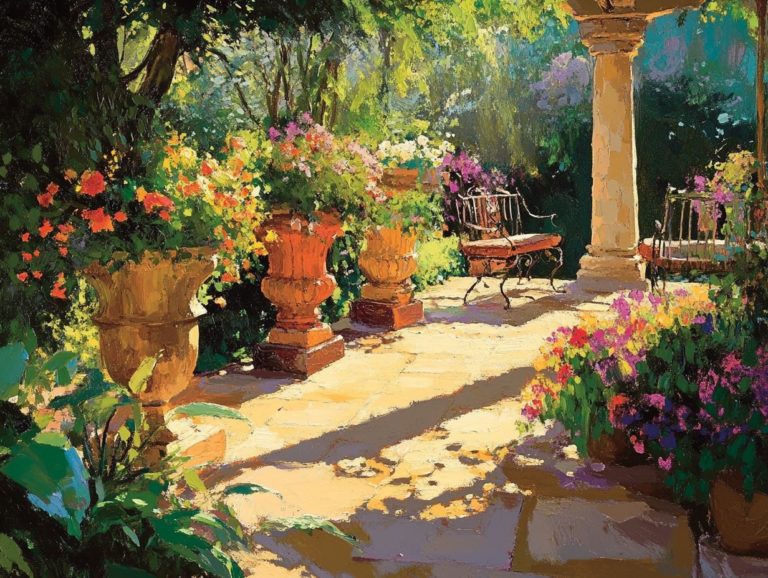“Choosing Weather-Resistant Materials for Decor”
When it comes to decorating your space, the materials you select are pivotal in achieving both style and durability.
Weather resistance is key, especially if your decor will be exposed to the elements. This article delves into the significance of choosing durable materials, offering insights into various options that can stand the test of time.
From practical maintenance tips to budget-friendly alternatives, you ll find guidance on making informed decisions for a beautiful, resilient home.
Explore how to elevate your decor while ensuring it remains protected from the whims of unpredictable weather.
Contents
- Key Takeaways:
- The Importance of Weather Resistance in Decor Materials
- Types of Weather-Resistant Materials
- Factors to Consider When Choosing Materials
- Best Practices for Maintaining Weather-Resistant Decor
- Affordable Finds for Stylish Outdoor Spaces!
- Frequently Asked Questions
- What are some important factors to consider when choosing weather-resistant materials for decor?
- What are some examples of weather-resistant materials that can be used for outdoor decor?
- How can I determine the level of weather-resistance of a material?
- Is it necessary to choose weather-resistant materials for indoor decor?
- What are some maintenance tips for keeping weather-resistant decor looking its best?
- Can I use weather-resistant materials for all types of decor?
Key Takeaways:
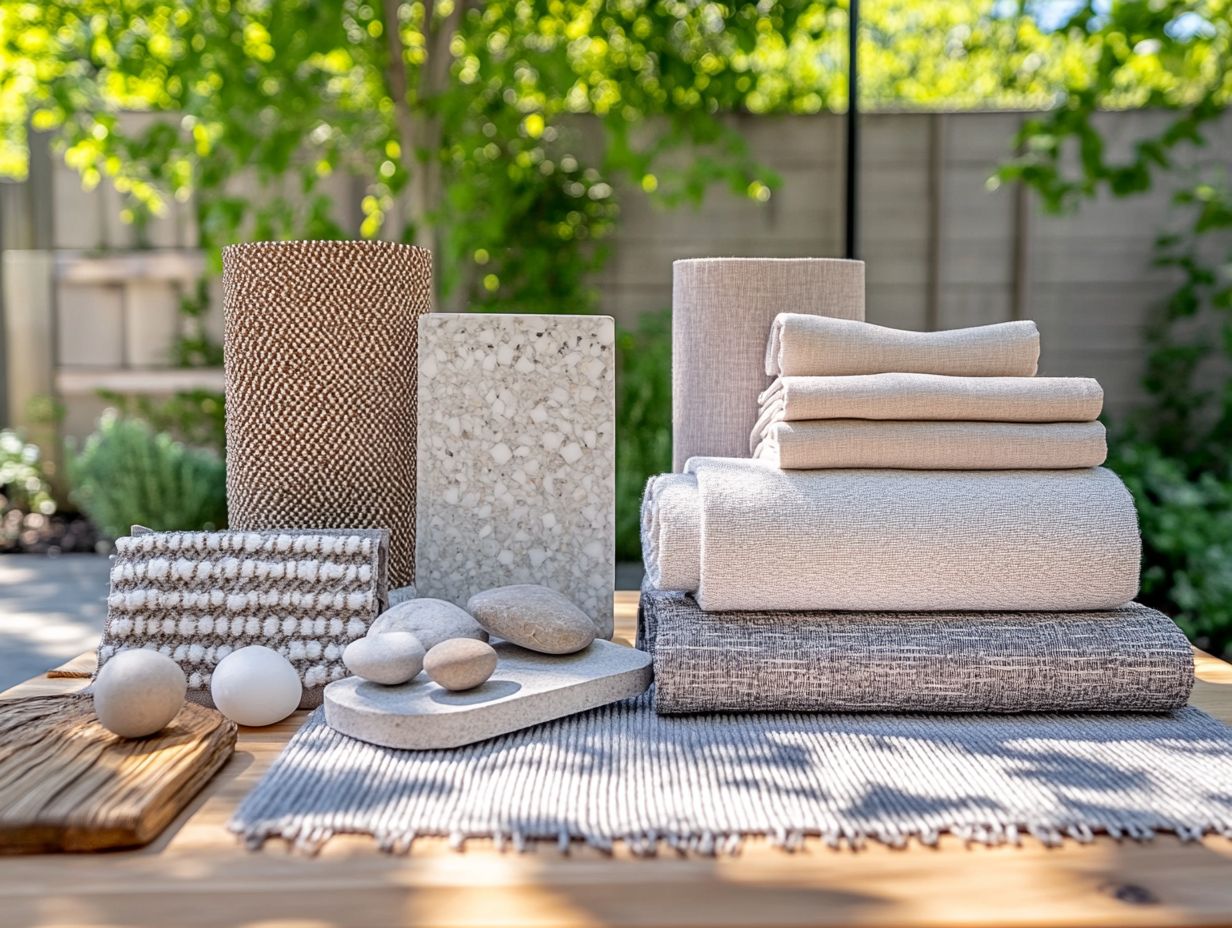
- Weather resistance is crucial for the long-term durability of decor materials. Consider the climate and environmental conditions of your area when choosing materials.
- Common weather-resistant materials include metal, plastic, and treated wood. Choose options that not only offer durability but also fit in with your desired design and aesthetic.
- Maintaining weather-resistant decor requires regular cleaning and care. Affordable options such as treated wood can still offer durability while being budget-friendly.
The Importance of Weather Resistance in Decor Materials
Weather resistance is more than just a desirable feature; it s an essential consideration when selecting decor materials, especially for your outdoor furniture.
The influence of climate on outdoor living spaces is profound. The longevity of your furniture depends on its ability to withstand diverse weather conditions.
By prioritizing durability, you can create inviting and stylish environments that stand resilient against rain, sun, and snow. This thoughtful approach ensures that your outdoor spaces extend the comfort and functionality of your indoor living, remaining vibrant and welcoming throughout every season.
Why It Matters for Long-Term Durability
Long-term durability is crucial for outdoor furniture, especially in areas where weather patterns can be unpredictable.
Your choice of weather-resistant materials significantly impacts how well your outdoor pieces endure over time. Consider options like teak and strong plastic, which are known for their resistance to harmful elements like moisture and UV rays, as well as temperature fluctuations perfect for outdoor settings.
To enhance longevity even further, think about regular maintenance practices. Applying protective wax or sealants can help fend off wear and tear. Covering your furniture during rough weather and storing it away during extreme conditions will keep it looking pristine and functional for years. This way, the aesthetic appeal of your outdoor space will match its lasting quality.
Types of Weather-Resistant Materials
When considering outdoor furniture, understanding the various weather-resistant materials available is essential for making informed choices. From the timeless elegance of teak wood to the contemporary allure of aluminum, each material has its own unique advantages and challenges.
Synthetic wicker and powder-coated steel also excel in terms of durability and style, making them popular choices for outdoor living spaces. By exploring these options, you can achieve the perfect blend of aesthetics and functionality in your outdoor environment.
Start choosing your weather-resistant materials today and make your outdoor space last!
Overview of Common Options
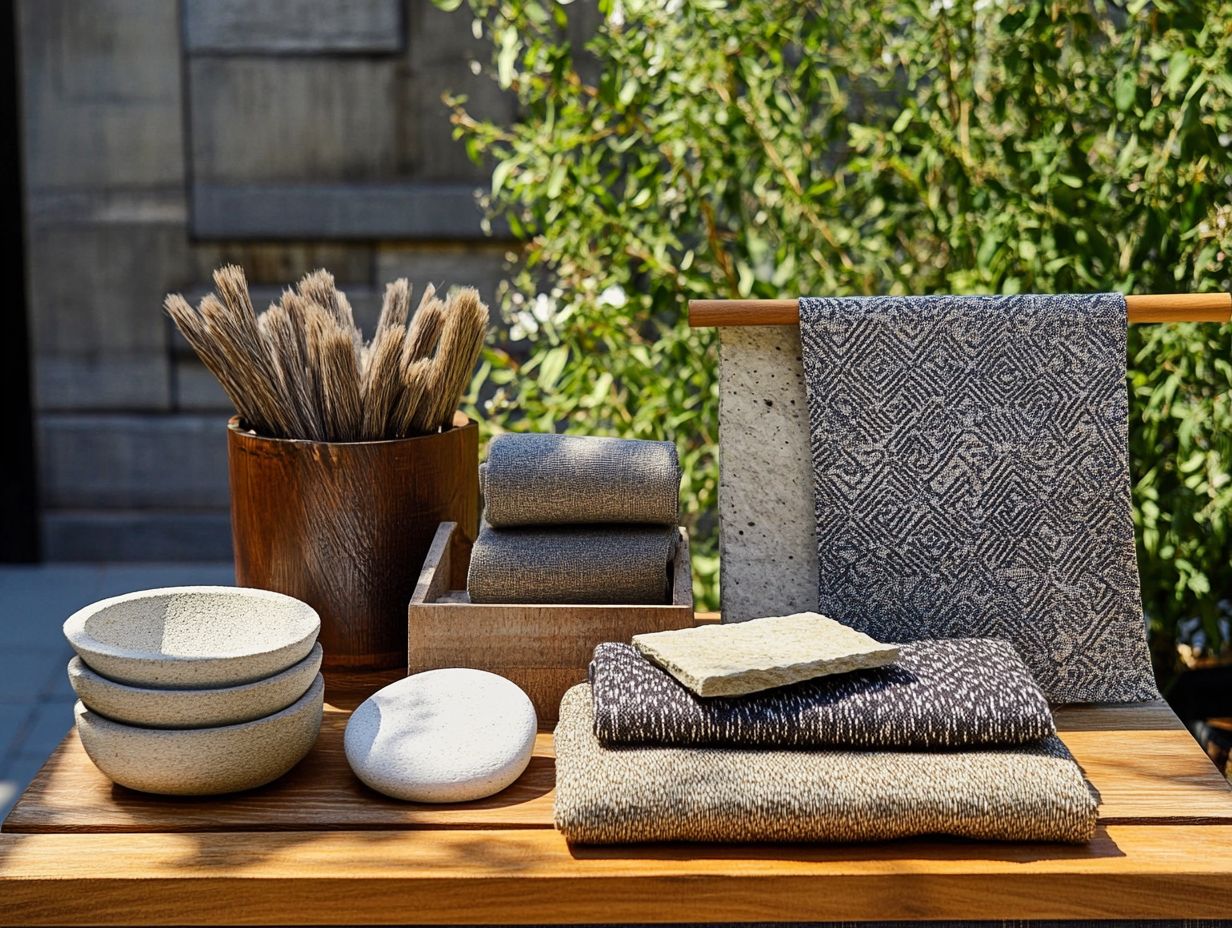
When considering weather-resistant materials, you have several premium options, including teak wood, aluminum furniture, synthetic wicker, and powder-coated steel. Each has its distinct advantages.
Teak wood stands out for its natural oils, which help it resist moisture and insects ideal for humid environments. If you’re near the coast, aluminum furniture is your go-to; it’s lightweight and corrosion-resistant, tackling salt erosion with ease.
If you love the elegance of rattan but want something practical, synthetic wicker mimics that look while being waterproof and UV-resistant. It lasts beautifully in sun-drenched areas.
On the flip side, powder-coated steel offers durability and a sleek aesthetic. However, it might need occasional touch-ups in extreme weather. Each material has its maintenance needs; wood typically requires regular oiling, while metals might just need a quick clean now and then.
This way, you can keep your outdoor spaces both functional and stylish, no matter the climate.
Factors to Consider When Choosing Materials
Selecting the right materials for outdoor furniture is about style and functionality. It demands a thoughtful approach to climate, environmental conditions, and maintenance needs.
By understanding how materials respond to local weather patterns, you can enhance the durability and visual appeal of your outdoor living spaces. Make sure the materials you choose match the overall design for creating cohesive outdoor areas that are beautiful and highly functional.
Climate and Environmental Conditions
Climate and environmental conditions are crucial when choosing materials for your outdoor furniture.
In regions with high humidity and frequent rainfall, consider materials like teak and eucalyptus. These woods have natural oils that fend off moisture and mold, making them ideal for such climates.
If you re in an area with extreme heat and relentless sun, durable options like aluminum and synthetic resin are invaluable. They resist warping and fading, ensuring your furniture stands the test of time.
Understanding these dynamics is key to selecting furniture that endures the elements and maintains its visual appeal. Choosing wisely can transform your outdoor space into an exciting retreat!
Design and Aesthetic Considerations
When selecting outdoor furniture, design and aesthetic considerations are essential. They shape the overall ambiance of your outdoor living spaces.
The materials you choose significantly impact style and comfort, influencing your experience in outdoor areas. For example, sleek aluminum frames with bright, weather-resistant cushions make a modern style that pops against green plants. Conversely, wooden options like teak can evoke a warm, natural feel, beautifully harmonizing with your garden.
Vibrant colors like azure blues or sunny yellows not only boost visual appeal but also invite relaxation and social connection. They transform any patio or deck into a welcoming retreat for gatherings or quiet evenings beneath the stars.
Best Practices for Maintaining Weather-Resistant Decor

Maintaining weather-resistant decor is crucial for extending the lifespan of your outdoor furniture and ensuring it consistently looks its best. By implementing regular outdoor maintenance practices like thorough cleaning and applying protective coatings you can significantly bolster the durability of materials such as teak wood and powder-coated steel.
Additionally, understanding the specific care requirements for various materials will help you create a more vibrant and inviting outdoor space.
Cleaning and Maintenance Tips
Cleaning and maintaining your outdoor furniture is all about preserving durability while enhancing looks. Different weather-resistant materials demand specific care routines to keep their charm and functionality intact.
For example, aluminum and synthetic wicker furniture should be cleaned at least once a month with a gentle soap solution. This simple step helps eliminate grime and prevents rust. On the other hand, wooden pieces benefit from occasional treatments with weather-resistant oils, which work wonders in preventing discoloration and cracking.
You can easily extend the life of your outdoor fixtures by regularly inspecting them for wear or damage, ensuring they remain inviting not just for a season, but for many years ahead.
Affordable Finds for Stylish Outdoor Spaces!
You can find budget-friendly options for weather-resistant decor without sacrificing durability or style. You ll discover a range of affordable materials that deliver outstanding performance in outdoor environments.
Consider synthetic wicker and HDPE wicker; they offer the sophisticated look of natural wood without the steep price. With a little outdoor maintenance and care, these economical choices can endure for years, keeping your outdoor living spaces inviting and stylish without straining your wallet.
Affordable Materials That Still Offer Durability
Affordable yet durable materials are essential for homeowners who want to enhance their outdoor spaces without breaking the bank. Consider options like composite decking, which blends wood fibers with recycled plastic.
This choice offers the natural aesthetics of wood without the maintenance headache. These materials resist rot, insects, and fading, making them a far smarter option than natural wood, which can warp or splinter over time.
In terms of outdoor furniture, aluminum is worth your attention. Its lightweight yet sturdy construction is impervious to rust and requires minimal upkeep.
Weather-resistant outdoor fabrics, such as solution-dyed acrylic, provide vibrant colors and UV protection. These fabrics outperform traditional cotton in terms of longevity and ease of maintenance.
By choosing these materials, you can create stunning, enduring outdoor spaces while keeping your budget intact.
Frequently Asked Questions
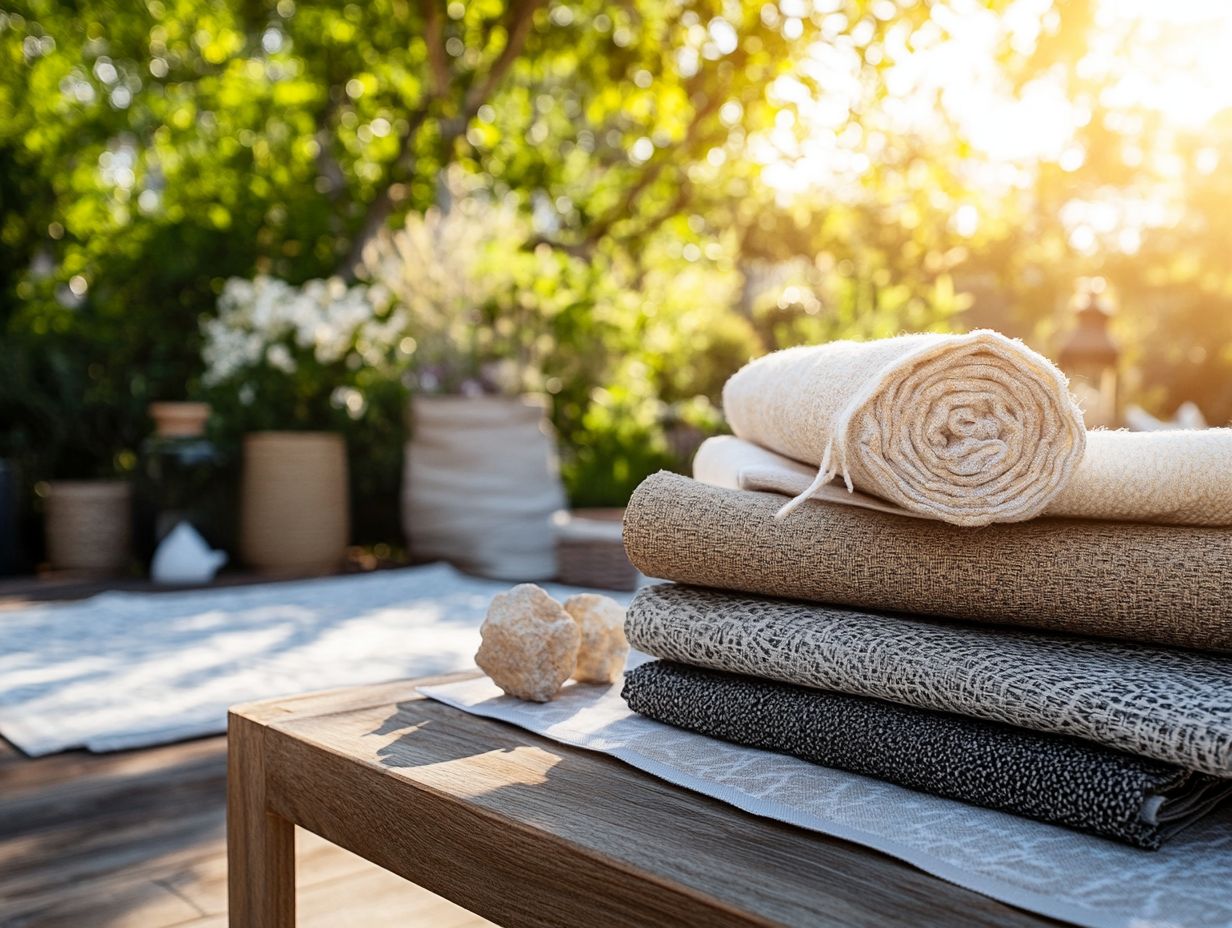
What are some important factors to consider when choosing weather-resistant materials for decor?
Some important factors to consider are the level of exposure to the elements, the material’s durability, resistance to moisture and temperature changes, and how good it looks.
What are some examples of weather-resistant materials that can be used for outdoor decor?
Examples include metal, stone, concrete, hardwoods such as teak or cedar, and synthetic materials like resin or vinyl.
How can I determine the level of weather-resistance of a material?
You can research the specific material’s properties, such as its ability to withstand high humidity, UV rays, and temperature fluctuations. You can also look at the material’s warranty and reviews from others who have used it in outdoor settings.
Is it necessary to choose weather-resistant materials for indoor decor?
While it may not be as crucial as outdoor decor, using weather-resistant materials indoors can still be beneficial, especially in areas that are prone to moisture or temperature changes, such as bathrooms or kitchens. It can also increase the longevity of your decor.
What are some maintenance tips for keeping weather-resistant decor looking its best?
Regular cleaning is crucial to keep your decor looking its best. Proper storage during extreme weather conditions can also help maintain the appearance and durability of weather-resistant materials. Using protective coatings or sealants can provide an extra layer of protection.
Can I use weather-resistant materials for all types of decor?
Weather-resistant materials are typically more suited for outdoor decor, but they can also be used for some indoor decor, such as furniture. However, some materials may not be suitable for certain decor items, so it’s essential to research and choose accordingly.
Start enhancing your outdoor spaces today with these simple tips!




